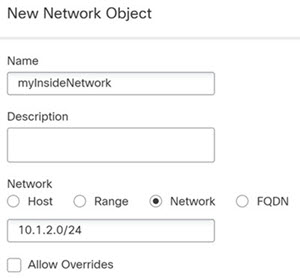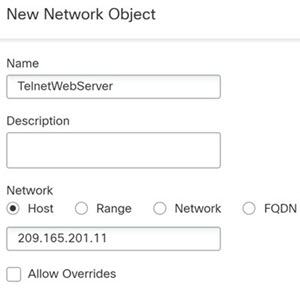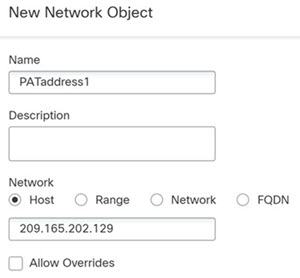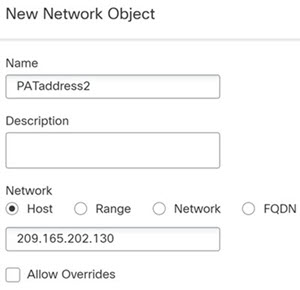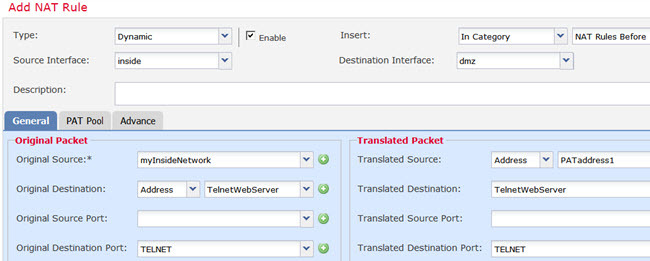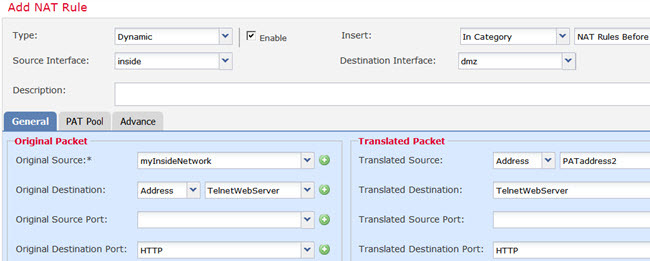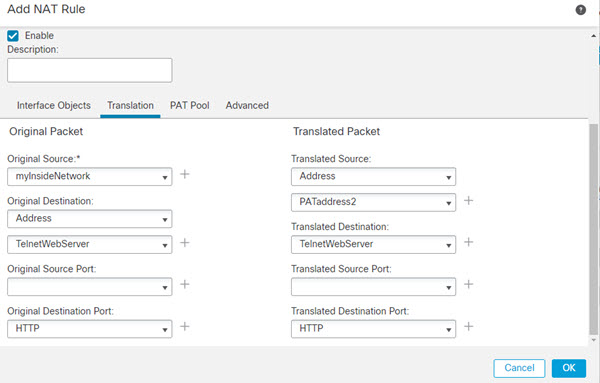Different Translation Depending on the Destination Address and Port (Dynamic Manual PAT)
The following figure shows the use of source and destination ports. The host on the 10.1.2.0/24 network accesses a single host for both web services and Telnet services. When the host accesses the server for Telnet services, the real address is translated to 209.165.202.129:port. When the host accesses the same server for web services, the real address is translated to 209.165.202.130:port.
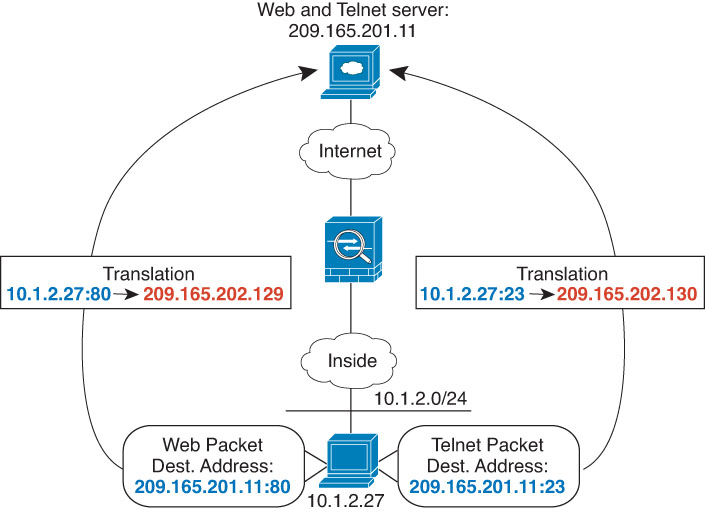
Before you begin
Ensure that you have interface objects (security zones or interface groups) that contain the interfaces for the device that protects the servers. In this example, we will assume the interface objects are security zones named inside and dmz. To configure interface objects, select .
Procedure
Step 1 | Create a network object for the inside network. |
Step 2 | Create a network object for the Telnet/Web server. |
Step 3 | Create a network object for the PAT address when using Telnet. |
Step 4 | Create a network object for the PAT address when using HTTP. |
Step 5 | Configure dynamic manual PAT for Telnet access. |
Step 6 | Configure dynamic manual PAT for Telnet access. |
Step 7 | Configure dynamic manual PAT for web access. |
Step 8 | Configure dynamic manual PAT for web access. |
Step 9 | Click Save on the NAT rule page. |
